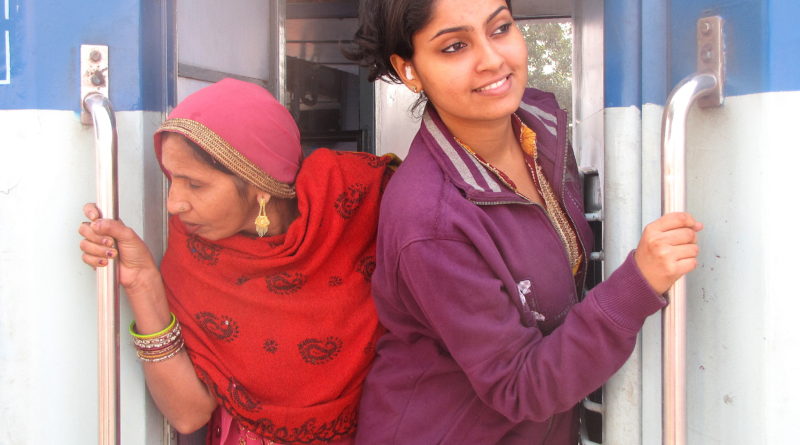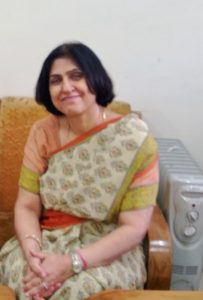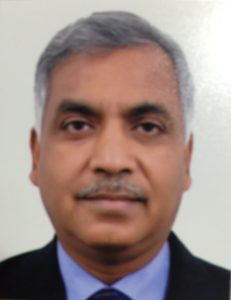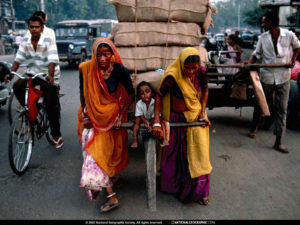Women to the Fore
Gender-related indicators under the National Family Health Survey (NFHS-4) have shown improvement over the years. The Health Ministry has launched a number of E-initiatives to help women improve their health and enjoy safe childhood as well as motherhood
Dr Suneela Garg/ Dr Arvind Garg
Environment is the most important social determinant of health, causing morbidity and mortality in a given population. The WHO’s comprehensive global assessment of the burden of disease from environmental risks reveals that globally, an estimated 24% of the burden of disease and 23% of all deaths can be attributed to environmental factors. Further, globally, deaths on account of noncommunicable diseases (NCDs), attributable to air pollution, amount to 8.2 million of the total 12.6 million deaths. NCDs, such as cardiovascular diseases including stroke, cancer and chronic respiratory disease, now claim nearly two-thirds of the total deaths caused by unhealthy environments.
The Ministry of Health and Family Welfare (MoHFW) has released the results of the National Family Health Survey (NFHS-4), 2015-16. Over the past decade, gender equality and women’s empowerment have been explicitly recognized as the key not only to the health of the nation, but also to social and economic development. India’s National Population Policy 2000 has ‘Empowering Women for Health and Nutrition’ as one of its recurrent strategic themes. Additionally, the promotion of gender equality and empowering of women is one of the eight Millennium Development Goals (MDG) to which India is a signatory. Goal 5 of the Sustainable development goals (SDGs) is related to gender equality. The pairing of the two concepts of women’s empowerment and gender equality into one MDG implicitly recognizes that gender equality and women’s empowerment are two sides of the same coin: progress toward gender equality requires women’s empowerment and women’s empowerment requires increase in gender equality.
The following are the data relevant to gender as per the Census and NFHS-4.
Nearly 587 million women are there in the country as per 2011 census. The survey shows the trend of population of women in India over the years.
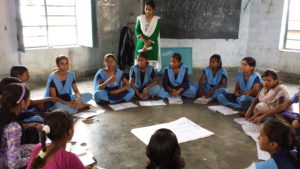 Most of the gender related indicators have shown improvement over the years. As compared to a sex ratio (0-6years) of 914 in NFHS-3, it has improved to 919 in NFHS-4. Literacy rate among the women improved from 55.1% in NFHS-3 to 68.4% in NFHS-4. Proportion of women who had more than 10 years of schooling improved from 22.3% in NFHS-3 to 35.7% in NFHS-4. Women who had married before 18 years of age decreased from 47.4% (NFHS-3) to 26.8% (NFHS-4).
Most of the gender related indicators have shown improvement over the years. As compared to a sex ratio (0-6years) of 914 in NFHS-3, it has improved to 919 in NFHS-4. Literacy rate among the women improved from 55.1% in NFHS-3 to 68.4% in NFHS-4. Proportion of women who had more than 10 years of schooling improved from 22.3% in NFHS-3 to 35.7% in NFHS-4. Women who had married before 18 years of age decreased from 47.4% (NFHS-3) to 26.8% (NFHS-4).
Nearly 84% (NFHS-4) of the currently married women participated in household decisions as compared to 76.5% in NFHS-3. However, the proportion of women who were paid in cash for the work done in the last 12 months decreased marginally from 28.6% in NFHS-3 to 24.6% in NFHS-4. Women who experienced spousal violence decreased from 37.2% (NFHS-3) to 28.8% (NFHS-4). Proportion of women having a savings bank account had also increased from 15.1% (NFHS-3) to 53% in NFHS-4.
Indicators pertaining to reproductive health and family welfare have improved over time. The total fertility rate has dropped to 2.2; the total proportion of women who had 4 ANC had increased to 51% and the total proportion of women with institutional births had increased to 79%.
With this background let us see how E-technology has been used to help improve health indicators.
1.ANMOL Mobile app
An ANM caters to a population of 3,000-5,000 and her work primarily involves providing primary health services around maternal and child health, family planning, nutrition and immunisation programmes. Collecting health care data is an extremely important part of their job and an ANM captures around 200 key indicators related to health, nutrition and immunisation of pregnant women, mothers and new born children in their hard-bound paper registers. Most of the work hours of the ANM are spent in manually copying the data from one register to another. Taking into account the issues faced by ANMs and to improve the overall standards of child and maternal health service provision in India and related data collection, the ministry of health and family welfare, with support from UNICEF, has introduced an android based tablet based application ANMOL. It ensures improvement in data quality, since the data is entered “at source” by health service providers themselves. It helps in authentication of the records of field workers and beneficiaries, as the application is Aadhaar-enabled. GOI plans to roll it out to all 293,000 ANMs in a phased manner. It has been successfully piloted in Andhra Pradesh.
2.Mobile app of Mission Indhradhanush
Mission Indradhanush Mobile App is the brainchild of Immunization Technical Support Unit (ITSU). The main objective of Mission Indradhanush App is to provide a user friendly interface to track the progress made under Mission Indradhanush by different states in a more comprehensive but less cumbersome manner.
The Mission Indradhanush Mobile App is a tool with the help of which immunization officers at different levels in national/state/district level will be able to showcase their performance in different rounds of Mission Indradhanush. The content and data available through this mobile app will be equally useful for policy makers, program managers at state and district level, immunization experts and general public as well. The data for each of the 201 districts is regularly updated by Mission Indradhanush Control Room placed at ITSU and made available through this Mobile App after each round of Mission Indradhanush.
The Mission Indradhanush Mobile App keeps its user updated with all the information generated on and round Mission Indradhanush over Twitter, Facebook and on Mission Indradhanush website. The information updated on these platforms is dynamically updated and users can see latest information without having to login to these social media platforms. The information appears on the app with just a tap on the icon.
3.Kilkari Project
The government has launched the Kilkari (meaning baby noises), a mobile voice message service that delivers weekly messages to families about pregnancy, family planning, nutrition, childbirth and maternal and child care, on every Friday. The database for the Kilkari programme will be taken from the successful Mother and Child Tracking System (MCTS) to monitor pregnant women and babies. As per plans, every woman registered with MCTS will receive weekly messages relevant to the stage of pregnancy and age of the infant. In all, 72 free audio messages, each of about two-minute duration, will reach targeted beneficiaries from the fourth month of pregnancy until the child is a year old. In the first phase, the Kilkari application is expected to benefit 1.84 crore pregnant women/newborns in Jharkhand, Odisha, UP, Uttarakhand and in some districts of Madhya Pradesh and Rajasthan. The Bill and Melinda Gates Foundation has provided the mobile phone application for Kilkari and mobile academy; the latter is a 240-minute free training module for ASHAs. RailTel Corporation of India Ltd, a mini ratna company, has been selected to provide data centre services for hosting the apps, while Reliance Communications will provide connectivity.
4.Mobile Academy:
In order to meet the shortage of skilled medical staff at the ground level, the Centre has launched Mobile Academy which offers a course via voice messaging for upgrading the medical and health skills of Accredited Social Health Activists (ASHA). ASHA are mostly local married women, brought in medical and health service stream in 2005-06 under National Rural Health Mission (NRHM) with five-phased training programme. About 58000 ASHAs working across Rajasthan would get benefit of upgrading their medical and health skills through this Mobile Academy course. The registration in the Mobile Academy course is through a toll free number (18003101704) where any ASHA can get registration for the course. It is an eleven lessons voice messaging course with 44 questions and the course is free for the ASHAs registered in ASHA Soft, an online system which facilitates the department. After completion of any of the eleven lessons, ASHA would be asked four questions and following answering them correctly, she would be promoted to next lesson. For qualifying the course, ASHA, after completing all eleven lessons, must attempt 44 questions and must obtain more than 50 per cent marks to get academy course certificate. This certificate would be issued by the Directorate, medical and health. ASHA would get priority for ANM course, PHC ASHA supervisor and for other government added schemes. The course would also help meet the shortage of skilled medical staff at CHC and PHC level.
5.Swasth Bharat Mobile application
The access to authenticate health information is the primary right of the citizen. Providing authentic Health information to the society is arguably one of the most important factors in improving health outcomes. Inadequate or poor health information can increase the risk of hospitalization or even disease burden. MoHFW through its egovernance initiatives is launching a mobile application “Swasth Bharat Mobile Application” to empower the citizens to find reliable and relevant health information. The application provides detailed information regarding healthy lifestyle, disease conditions (A-Z), symptoms, treatment options, first aid and public health alerts. The application “Swasth Bharat Mobile Application” is an Android based mobile application, which can be installed on any device with Android OS version 2.3 or above. The application will be launched soon for other popular platforms.
Conclusion:
•E- Communication is a powerful tool
•Safe Motherhood and Safe childhood are the backbone of the country
•NFHS-4 indicators show improvement in many areas, however much is left to be desired
•E-initiatives to help women improve their health are being piloted across the country.
•Fusion of Science and Technology with health interventions linking grass root level workers to policymakers will address the gender gap and go a long way in improving health indicators.
(The authors are Director-Professor and Head, Department of Community Medicine, Maulana Azad Medial College, New Delhi, and Head of Paediartrics, Apollo Hospitals, Noida)

